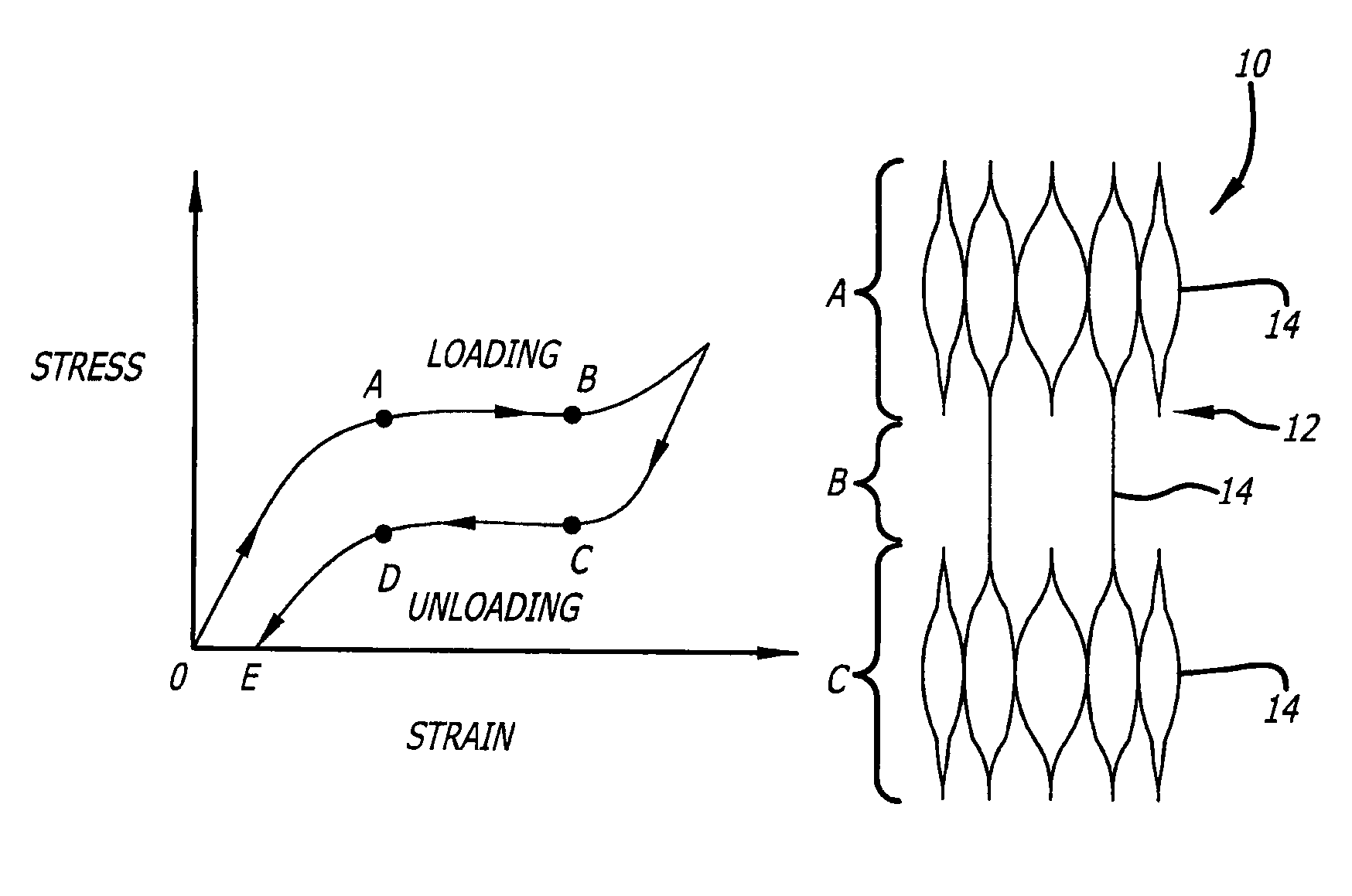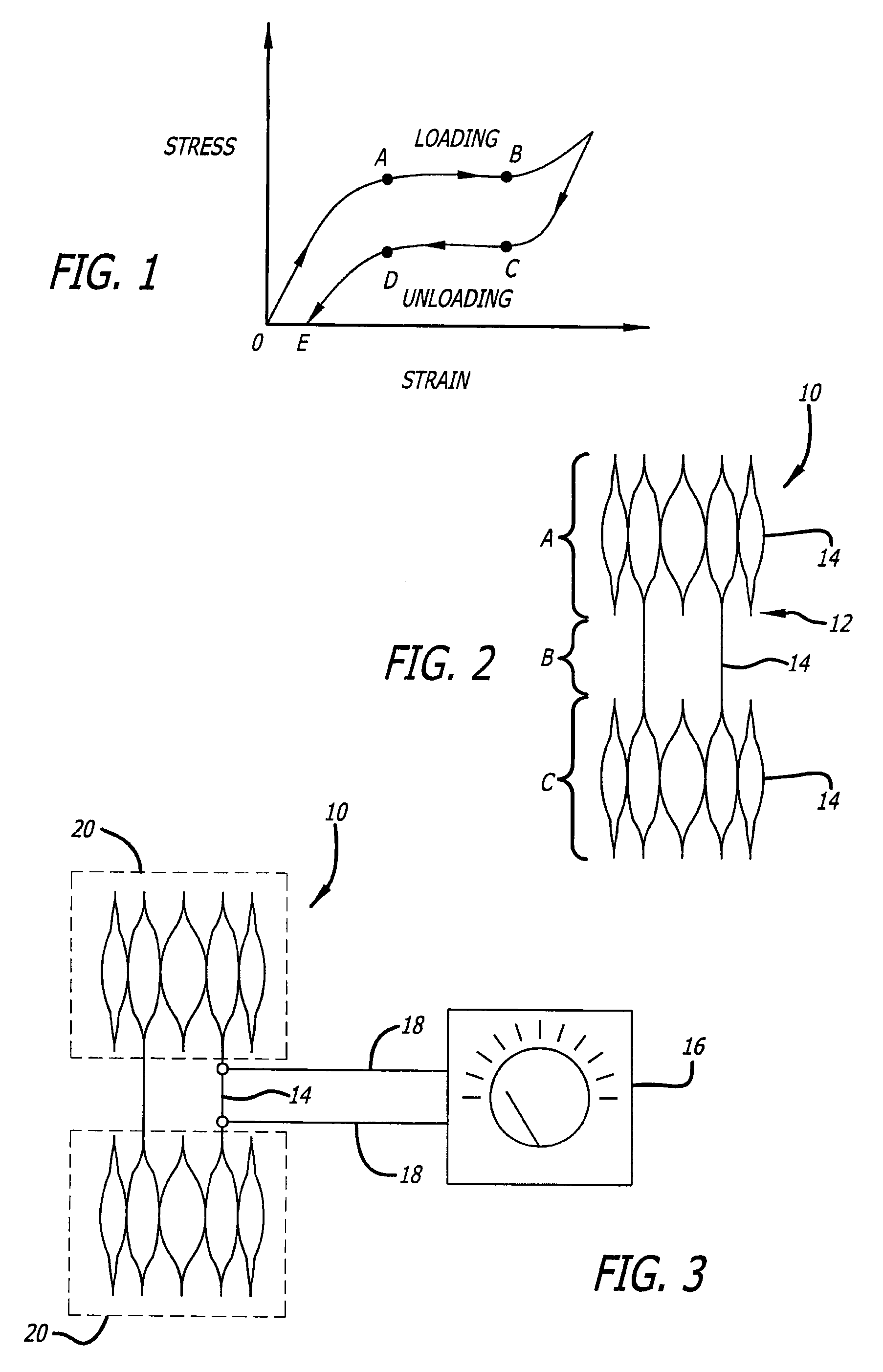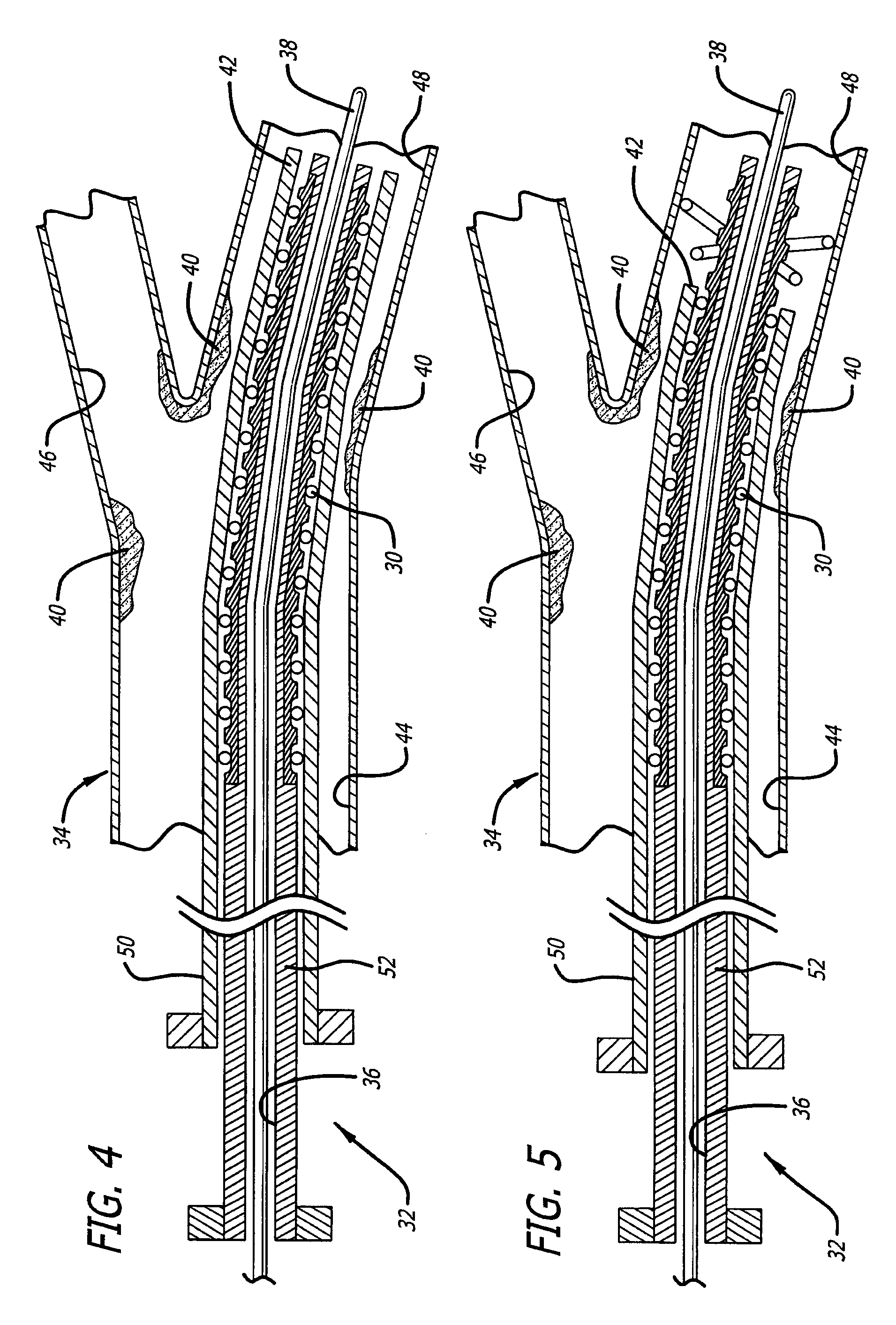Variable stiffness medical devices
- Summary
- Abstract
- Description
- Claims
- Application Information
AI Technical Summary
Benefits of technology
Problems solved by technology
Method used
Image
Examples
Embodiment Construction
[0032]The present invention is directed to a medical device, and the process for forming the same, which exhibits a differentiated degree of stiffness at selected locations of its structure. Stiffness is similar to elasticity in that the medical device can have higher degrees of elasticity at select portions of the device. In the case of a stent, such differentiation may be limited to the longitudinal stiffness versus the radial stiffness of the stent or may include both longitudinal as well as radial stiffness differentiation in certain areas of its structure. The invention allows a fabricated stent's stiffness characteristics to be tailored to more effectively accommodate specific types of deployment sites. For illustration purposes, the following exemplary embodiments are typically shown as vascular stents. However, it is recognized that the present invention is not limited to such applications and rather may be used in various other medical devices (e.g., guide wires, endovascul...
PUM
 Login to View More
Login to View More Abstract
Description
Claims
Application Information
 Login to View More
Login to View More - R&D
- Intellectual Property
- Life Sciences
- Materials
- Tech Scout
- Unparalleled Data Quality
- Higher Quality Content
- 60% Fewer Hallucinations
Browse by: Latest US Patents, China's latest patents, Technical Efficacy Thesaurus, Application Domain, Technology Topic, Popular Technical Reports.
© 2025 PatSnap. All rights reserved.Legal|Privacy policy|Modern Slavery Act Transparency Statement|Sitemap|About US| Contact US: help@patsnap.com



